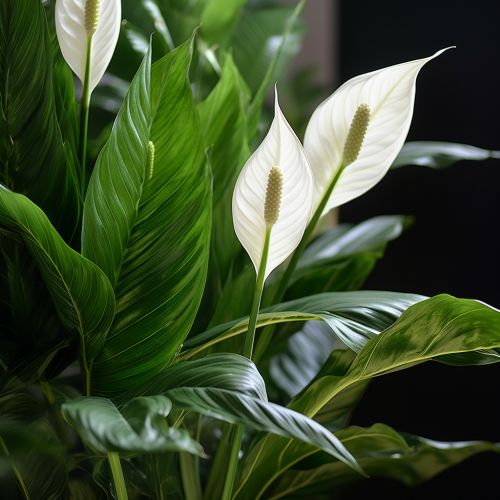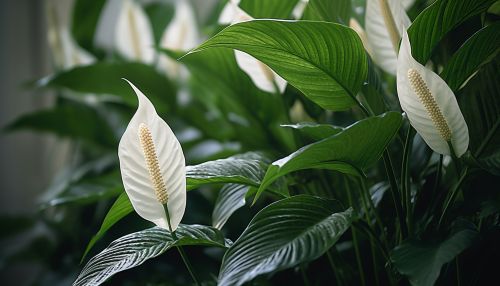Peace Lily
Introduction
The Peace Lily, scientifically known as Spathiphyllum wallisii, is a popular houseplant species from the family Araceae. Native to tropical regions of the Americas and Southeast Asia, Peace Lilies are renowned for their striking white blooms and lush green foliage. They are often used in indoor spaces for their aesthetic appeal and air-purifying properties.


Description
Peace Lilies are evergreen perennials that can grow up to 3 feet in height. The plant's leaves are large, glossy, and dark green with pointed tips. The most distinctive feature of the Peace Lily is its unique bloom, known as a spathe, which is a large, white, leaf-like bract that surrounds a spike of small flowers called a spadix. The spathe is often mistaken for a flower due to its striking appearance.
Cultivation and Care
Peace Lilies are relatively easy to care for, making them a popular choice for novice gardeners. They thrive in medium to low light conditions and prefer well-draining soil. Overwatering is a common issue with Peace Lilies, as they are sensitive to waterlogged soil. It is recommended to water the plant only when the top inch of soil is dry.
Propagation
Propagation of Peace Lilies is typically done through division, where the plant is separated at the roots into two or more parts. Each part should have at least two leaves and a healthy root system to ensure successful growth.
Symbolism and Uses
In Western cultures, the Peace Lily is often associated with peace, purity, and innocence, commonly used in funerals and memorials. In addition to its symbolic uses, the Peace Lily is also recognized for its air-purifying qualities. According to a study by NASA, Peace Lilies can filter out harmful toxins from the air, improving indoor air quality.
Potential Issues
While Peace Lilies are generally hardy plants, they can be susceptible to common houseplant pests such as mealybugs and spider mites. Overwatering can also lead to root rot, a serious condition that can kill the plant if not addressed promptly.
